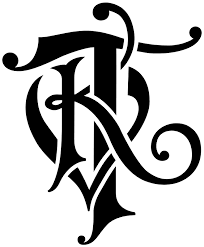Master Sommelier Larry Stone Unearths To Kalon Vineyard’s Historic Legacy
Larry Stone's name resonates with wine enthusiasts and industry insiders alike. His rich experience spans several decades, taking him to acclaimed establishments like Charlie Trotter's, the Ritz-Carlton, and Rubicon. Today, his work at Lingua Franca, alongside Dominique Lafon and Thomas Savre, showcases his unerring passion for the world of wine and commitment to crafting some of the most captivating Pinot Noir and Chardonnay wines in Oregon.
When were you introduced to the wines of Napa Valley?
Very early on. My parents and I lived in Seattle but would often take trips to Napa Valley. When we first started visiting Napa Valley in the early '60s, there were people growing prunes, plums, walnuts, and raising cattle. There was even a newsletter called "Walnuts and Wine." It was a very different landscape back then.
How did you first come to learn about H.W. Crabb and his historical significance with To Kalon Vineyard?
I first learned about H.W. Crabb after doing some research for wineries I was managing at the time. In 1972, I read a book about the wines of Napa Valley that detailed the importance of H.W. Crabb planting the To Kalon Vineyard, setting a standard for what would come afterward.
Can you describe what factors contributed to the success and legacy of To Kalon Vineyard?
Pre-prohibition, the success of H.W. Crabb, combined with a massive phylloxera outbreak in Europe, gave New World wine the opportunity to be marketed worldwide, shifting the European perspective. Post-prohibition, Robert Mondavi was an enormous part of promoting the To Kalon Vineyard. He wasn't the first to grow Cabernet there, but he was the first to bring attention to the vineyard, especially by using the word To Kalon Reserve on his Fumé Blanc labels. He realized To Kalon was special and needed preservation. It is historically the most important place in Napa Valley, even if it took over a century for its significance to be recognized as it is today.
How did the legacy of To Kalon survive Prohibition?
After the initial boom in the 1890s following the success of H.W. Crabb, there was Prohibition. It caused a massive downturn and a collective loss of memory about winemaking, and only a few wineries survived that period. It was really Robert Mondavi who revived the To Kalon name.
How did Robert Mondavi elevate the significance of To Kalon Vineyard in the wine world?
Despite wine not being popular in North America at the time, Mondavi took a significant risk by focusing on To Kalon Vineyard. He brought immense attention to the site, and while many respected the land, no one had a vision as he did. His decision to put "To Kalon Reserve" on the Fumé Blanc labels highlighted the vineyard's importance and reintroduced it to the world as a North American Grand Cru.
What was the initial reception of Cabernet Sauvignon from To Kalon Vineyard?
Most of the vineyard was initially planted to white varietals such as Riesling, Gewurztraminer, and Sauvignon Blanc. Post-prohibition, people really started paying attention to Cabernet Sauvignon from To Kalon when Robert Mondavi released his Private Reserve Cabernet Sauvignon. It didn't initially have the widespread name recognition the Fumé Blanc did, but it would come to be widely respected by critics around the world.
What makes To Kalon historically significant for Napa Valley and the entire winemaking world?
To Kalon is the foundational vineyard for Napa Valley. Robert Mondavi emphasized that we needed a vision for Napa Valley to show we could make the finest wine in the world, rivaling even the best chateaus in France. This vision was grounded in To Kalon.
How would you encapsulate the transformation and rise of Napa Valley and To Kalon Vineyard over the years?
Robert Mondavi's words capture it best: "We have to have the vision of Napa Valley for the future that shows we can make the finest wine in the world... and not try to make wine cheaply." He paved his own trail, representing the vision of a Napa Valley that could produce wines matching the quality of those from Bordeaux.

